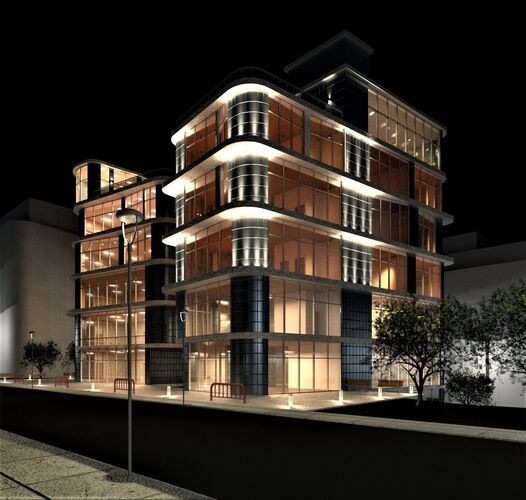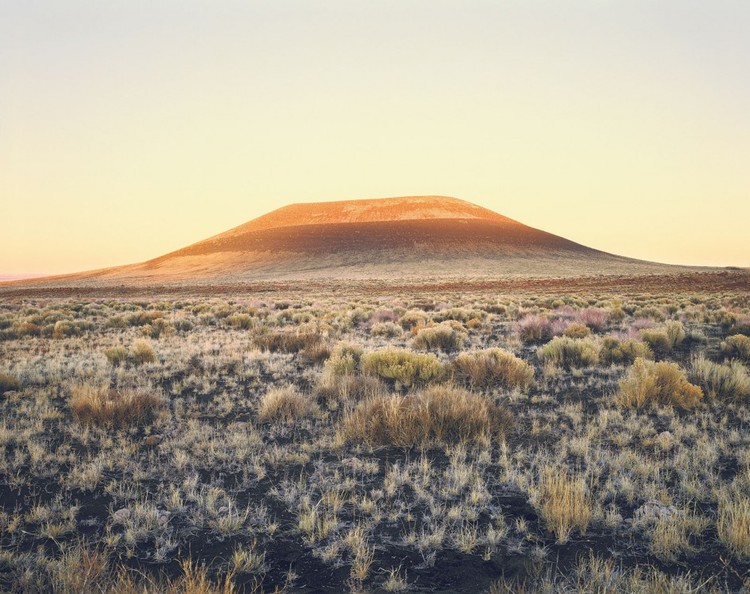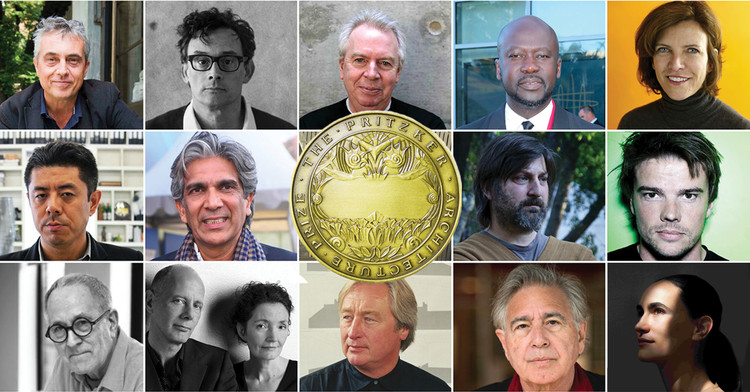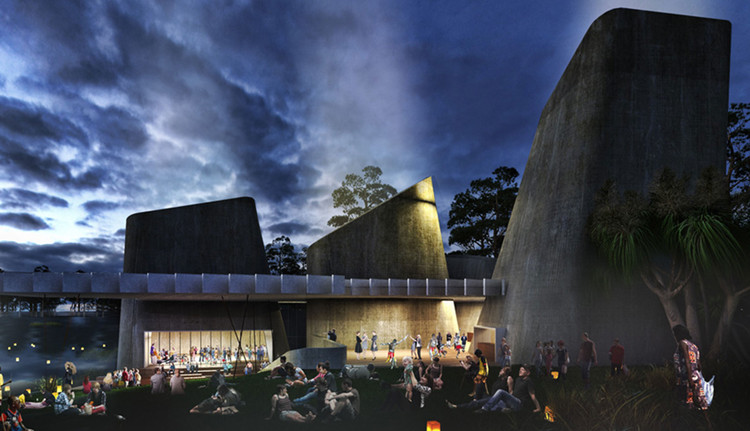
A guide from Graphisoft on how to create powerful design presentations with Archicad through the use of Archicad version 25.


A guide from Graphisoft on how to create powerful design presentations with Archicad through the use of Archicad version 25.

The final look of the building is determined not only by the materials, texture, colors and forms of the space, but also by lighting design. Architecture is all about vision, and lighting enhances the way we perceive architecture even more. For example, in the case of outdoor lighting design, lighting the façade will give a new opportunity for a building to showcase its nightlife “personality” by creating a completely different atmosphere in the surroundings.
Let’s see how façade lighting design can be implemented in Revit with the help of the LIGHTS add-on.
Until a few years ago, kitchens were separate rooms where food was prepared, but nowadays their role has changed. With open-plan designs, often combined with a dining or living room, they are a place for coming together. In many homes, they are even the center of everyday life. This multiple-function space challenges designers to produce coordinated room concepts with a uniform look.
Compromises when it comes to design and color? Nobody wants that when planning their perfect kitchen. There is a demand for materials with surfaces that always look the same no matter the use, for kitchen and living room designs with a uniform look and targeted accents.

For those in the northern hemisphere, the last full week in January last week kicks off with Blue Monday - the day claimed to be the most depressing of the year. Weather is bleak, sunsets are early, resolutions are broken, and there’s only the vaguest glimpse of a holiday on the horizon. It’s perhaps this miserable context that is making the field seem extra productive, with a spate of new projects, toppings out and, completions announced this week.
The week of 21 January 2019 in review, after the break:

Ten years after a destructive earthquake rocked Italy's central Abruzzo region, many students still attend class in temporary modules similar to containers. Named winners of an international competition, SET Architects’ design for the new “Sassa School Complex” proposes reconstructing a place for students and the community to learn, gather, and grow. Inspired by the modularity and essential nature of climbing frame play structures, the architects describe the design as a metaphor for “freedom and social aggregation as a fundamental value for dynamic and innovative teaching.”

I was part of the last generation of architectural students who didn't use computers (we’re only talking the early 1990’s here; there was electricity, color TV’s, rockets, just no renderings.) In my final year at college I miscalculated how long it would take me to finish my thesis project. As the deadline approached, I realized it was too late for me to match my fellow students’ presentations. At the time Zaha Hadid, and her deconstructivist paintings, set the style for architectural illustration. That meant many student projects being rendered in oil paints on large canvases.

The implementation of a Complete Street is something to be celebrated. A Complete Street initiative is a clear indication that a city is striving for urban mobility and seeking a more democratic and safer use of space. Nevertheless, it is vital to measure the impact of these interventions when implementing future actions.
Joel Carlos Borges Street, the first Complete Street in São Paulo, underwent an evaluation two months after it was completed. The study revealed that 92% of its users approved of the project and believed that the changes were beneficial.

Winter is hardly the high season for Toronto's waterfront. Nevertheless, the annual design competition Ice Breakers aims to draw people back to the outdoors, populating the frozen harborside with installations celebrating the winter. This year's winning designs are currently on show, centering around the theme "Signal Transmission."
For a third year in a row, Ports Toronto and the Waterfront Business Improvement Area (WBIA) partnered to produce this 2019 exhibition. Out of hundreds of international submissions, the winning designs include an illuminated starlight house, kaleidoscopic mirrors, and arches of bells, now on display until February 24.
See all five winning installations with descriptions by the architects below.

The ‘Super Tall and Skinny’ NYC Tower 111 W 57 by SHoP Architects is forging ahead as seen in this photographic construction update by Paul Clemence from Archi-Photo. In the photos, the glass and terracotta facade seems largely complete, casting beams of light into New York's notoriously valley-like streets. SHoP's ultra-thin residential tower, which is set for completion this year, will rise above the Empire State Building and even One World Trade Center, taking a bird's eye view over the entirety of the city skyline.

After revealing the design for the new Oakland Athletics baseball stadium, Bjarke Ingels Group has proposed a new use for the existing 51-year-old Oakland-Alameda County Coliseum. The existing stadium will be overhauled into a new commercial and housing hub to create new economic, cultural, and recreational opportunities. The Coliseum will be converted into a sunken amphitheater at the heart of a new municipal park.

2019 has already witnessed a series of bridge-related milestones marked, from the world’s longest bridge nearing completion in Kuwait to the world’s largest 3D-printed concrete bridge being completed in Shanghai. As we remain fixated on the future-driven, record-breaking accomplishments of realized bridge design, "911 Metallurgist” has chosen to look back in history on some of the visionary ideas for bridges which never saw the light of day.
Whether stopped in their tracks by finance, planning, or engineering difficulties, the four bridge designs listed below embody a marriage of art and engineering too advanced for their time. From a proposal for a EuroRoute Bridge between Britain and France, to a 12-rail, 24-lane bridge across the Huston River in New York, all four designs share a common, ambitious, yet doomed vision of crossing the great divide from pen and paper to bricks and mortar.

Everyday, the theme of the XII International Architecture Biennale of São Paulo, Brazil, proposed by the curators Vanessa Grossman, Charlotte Malterre-Barthes and Ciro Miguel, seeks to reveal architecture and space through everyday life. Architects and urban planners have long aspired to design total environments, civilizations, even the planet. However, in the current climate of political and economic uncertainty, occurring against the backdrop of unprecedented environmental impacts wrought by rapid technological development, design professionals have begun to acknowledge the vulnerability of their work to global transformations and the challenges of an automated future.

MVRDV have released details of their proposed mixed-use complex, designed to redevelop a post-industrial site in Kiel, Germany. The 65,000-square-meter proposal will adopt a flexible design system as opposed to a fixed, unchangeable plan, thus allowing the scheme to adapt to future demands as the design development progresses.
Labeled the “KoolKiel,” MVRDV’s scheme will occupy an existing large, single-story building previously used to store chains of ships, and for the printing of Germany’s famous Werner comics in the 1980s. The site’s current use as a hub for media and creative industries, and its resulting charismatic identity, has strongly influenced the MVRDV scheme, with the retention of the existing structure and lively, playful exterior spaces.

This guide is not a catalog. It is an open invitation to walk around the city and learn more about the architecture in Guatemala City.
The Guide to Modern Architecture in Guatemala City was written by Raúl Monterroso, Gemma Gil, and photographed by Andrés Asturias. In partnership with The Cultural Center of Spain in Guatemala, the guide addresses a descriptive analysis of 35 buildings, structured in five different routes, with the aim of not only synthesizing a series of physical characteristics but to provoke a reflexive, analytical and critical observation of the environment.
As Raúl Monterroso points out, while he shares five sites that every architect must visit, the goal is to introduce people to Guatemala's modern movement. It is an invitation to walk through the city and identify it with a different built heritage, however one that also shapes the landscape and fits into the urban context. Learn more about modern architecture in Latin America, below.

After having previously photographed the offices of architecture firms in the Netherlands, Dubai, London, Paris, Beijing, Shanghai, Seoul, the Nordic countries, and Barcelona, architectural photographer Marc Goodwin continues the series with an exploration of 15 large architecture and design studios in Los Angeles. Featuring a set of emerging and world-renowned offices alike, the series gives a glimpse into the life of designers across the City of Angels.

Each year, the Boston Society of Architects offers the James Templeton Kelley Prize to the best final design project for the MArch degree at the Harvard Graduate School of Design. This year, the March II recipient was Ziwei Song for their thesis titled “Not so skin deep: vernacularism in XL” for exploring alternative ways of integrating the Chinese vernacular with modern “XL” developments.
Ziwei’s thesis sought to re-approach the typical developer project in China, and demonstrate the capacity of the vernacular image to positively-effect the sequence, perception, and exposure of space. To test this, the project was placed on Chongqing, a typical second-tier city in China with a concentration of XL developer projects.

The Vancouver Art Gallery has unveiled the final design for its 300,000-square-foot building designed by Herzog & de Meuron. Designed to serve the Gallery’s ever-expanding collection of art and educational programs, the scheme will offer “a global platform for Vancouver’s and Canada’s thriving arts scene and play a vital role in establishing this city as one of the world’s most foremost cities for arts and culture.”
The scheme has been designed as a sculptural, symmetrical, upright building infusing opaque and transparent surfaces. The stacked scheme sees a minimal mass at the bottom contrast with larger volumes concentrated at the top, allowing light and air to filter down to an active, open-air courtyard below.

American light and space artist James Turrell's best-known work, Roden Crater, is now set to open to the public within the next few years thanks to a series of partnerships and new funding. Part of the additional funds includes a $10 million donation from Kanye West that would allow the project to expand and open within the next five years. Only a small group of people have experienced the crater, and the new funding will jump-start the updated master plan, which includes a restaurant, visitor’s center, cabins, and a "light-spa."

Gensler has released details of their proposed Tower Fifth in New York City. If realized, the 1556-foot-tall scheme would be the second-tallest building not just in New York, but in the Western Hemisphere. Located east of Fifth Avenue between 51st and 52nd Street, the tower will sit adjacent to St. Patrick’s Cathedral.
According to Gensler, who designed the scheme in collaboration with developer Harry Macklowe, the tower “creates a new paradigm for how a supertall structure meets the street and interacts with its neighbors.”

Architecture research initiative “arch out loud” has announced the winners of their “Waste: Multi-Purpose Stadium” competition, asking participants to speculate on the design of a multi-purpose stadium at the former Olusosun Landfill in Lagos, Nigeria.
The competition was organized in response to the fact that the world creates more than a billion tons of garbage per year, most of which is incinerated, buried, and explored to landfills. As populations and major cities expand, so too must our “ability to reverse wasteful tendencies and begin living more efficiently and sustainably.”

UNESCO has named Rio de Janeiro, Brazil as the World Capital of Architecture for 2020. In keeping with UNESCO’s recent partnership agreement with the UIA, UNESCO designates the World Capital of Architecture, which also hosts the UIA’s World Congress. The World Capital of Architecture is intended to become an international forum for debates about pressing global challenges from the perspectives of culture, cultural heritage, urban planning and architecture.

It's a new year, and as we inch closer to February speculation has begun to swirl around who will be named next laureate(s) of the Pritzker Prize. What used to be a somewhat predictable award has become less so in recent years, and if you look at who has won you will realize that anything is possible. Will the jury honor a member of the "old guard," as when they awarded the late Frei Otto? Or will they recognize a young architect, as when they selected Alejandro Aravena?
We want to hear from our readers - not just about who probably will win the prize, but about who should win the prize, and why.
Cast your vote in the poll below - or add in the dark horses you think deserve the honor in 2019.

Zinc is a natural element extracted from ores. Its symbol, which appears in the dreaded Periodic Table, is Zn. Through a metallurgical process of burning its impurities (reducing zinc oxide and refining), it assumes a much more friendly appearance, and later becomes the sheets, coils, and rollers used in construction. The main characteristic of this material is its malleability, which allows it to be worked easily, allowing to cover complex forms in facades and roofs of buildings.

Australian practices NAAU and Enlocus have designed a plan to transform the mining town of Jabiru in Kakadu National Park into a tourism destination. The Gundjeihmi Aboriginal Corporation will receive $446 million in funding to support the project, setting out a vision for the future of the town following the scheduled closure of the nearby Ranger uranium mine in 2021. The plan includes new accommodation, education and health services, and a World Heritage Interpretation Center.

Construction has begun on the Powerhouse Company-designed pavilion for the ING campus in Amsterdam. Located in the up-and-coming district of Amsterdam Southeast, the 900-square-meter pavilion seeks to “make a bold statement while integrating with its surroundings."
The clean, minimalist pavilion will sit at the heart of the ING campus, serving as both a dining area and a multifunctional space for the community. Emphasizing the natural landscape, the pavilion offers a synergy between the built and natural environment through a friendly circular form, a timber interior, and green Tichelaar tiles on the north and east facades.